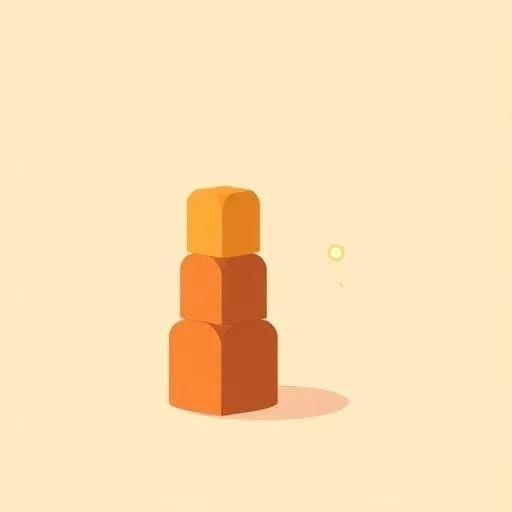
The other afternoon I was sprawled on the rug, half-reading the news while my daughter tried to balance one last neon-pink tile on top of a wobbly rainbow tower. She stuck her tongue out the way she always does when the structure teeters, and right on cue the whole thing clattered down. Instead of fussing, she laughed, scooped up the pieces, and started again—only taller this time. Watching her carefully balance each new piece made me wonder how she’ll build her career future. Minutes later I scrolled past the headline: OpenAI is quietly building an AI-powered jobs platform to rival LinkedIn. The timing felt almost scripted.
A Brand-New Playground for Careers

So what’s actually new? OpenAI isn’t just slapping chatbots onto a job board. The idea is to match people to work the way my kid matches tiles to gravity: by feel, balance, and endless iteration. The system ingests far more than résumés—think GitHub contributions, design portfolios, voice samples, even how you explain a problem in short video clips—then predicts where you’ll thrive, sometimes for roles you’d never keyword-hunt yourself. Fidji Simo, who heads OpenAI Applications, calls it “finding perfect matches between what companies need and what humans can offer.”
That line lands differently when you’ve just witnessed a seven-year-old invent skyscrapers on a carpet. She isn’t listing skills; she’s showing possibility. If the platform works, hiring managers could watch a thirty-second clip of someone solving a puzzle and feel the same spark I get seeing those tiles click together. Less pedigree poker, more proof of play.
The New “Must-Have” Skill on Every Résumé

Alongside job matching, OpenAI plans to issue digital badges through something called the OpenAI Academy. Think of it as language-certification for AI teamwork: Level 1 you can politely prompt, Level 3 you co-author code with Copilot, Level 5 you orchestrate multi-model labs. Employers see the badge and know exactly how fluent you are at collaborating with non-human colleagues. That’s genuinely revolutionary for how we think about careers; credentials shift from “Where did you go to school?” to “How well do you dance with machines and still stay human?”
Early pilots already hint at faster, fairer hiring. One retail-chain trial cut time-to-hire by half while doubling the share of candidates from non-traditional backgrounds. My daughter doesn’t know what “screening bias” means, but she understands sharing the blocks so everyone gets a turn—that’s the outcome we want scaled.
Keeping the Human Touch in a World of Algorithms

You know that feeling when auto-correct swaps your friend’s name to “Burrito” and you almost send the text? Tiny glitch, big eye roll. Hand the same power to a recruiter-bot and the stakes climb. Researchers keep warning that over-automation can flatten people into data pancakes—flattened skills, flattened stories, flattened soul.
But picture the alternative workflow: software sifts 10,000 applicants down to 50 whose micro-behaviors predict creative stamina. After that, humans step in, coffee in hand, ready for real conversation, culture sniffing, mentorship checking. Deloitte found companies using AI plus human follow-up improved one-year retention by fifteen percent. The algorithm didn’t replace empathy; it carved out space for more of it. My own rule of thumb—born from too many canceled playdates during crunch week—is let gadgets do the heavy lift, save your heartbeat for the hug.
How We Can Raise the Next Generation of Innovators—Without Turning the Living Room into a Coding Bootcamp

Right now with my seven-year-old we play “Adapt-Attack.” I hand her three random objects—say a wooden spoon, duct tape, and a deflated balloon—then give her five minutes to invent a toy that can carry a Lego figure across the couch ravine. She grumbles, experiments, fails, giggles, rebuilds. No screens, just chaos and cheer. The game feels silly, but it rehearses the exact muscles OpenAI’s badges will eventually test: improvisation, rapid iteration, human whimsy.
If you want a low-tech starter kit today:
- Rotate open-ended materials—cardboard, fabric scraps, old headphones—and ask your kid to combine two into something new each weekend.
- Let them overhear you problem-solving out loud: “My route to the pharmacy is blocked; how else could I get there?” Narrating uncertainty teaches that plans evolve.
- Cap screen time, but when you do allow it, choose sandbox games (think Minecraft creative mode) and play together. Ask “What if we build a city that floats?” so they see tech as clay, not cable TV.
Notice none of these steps require Python. They cultivate curiosity, collaboration and resilience—exactly the traits algorithms can’t fake.
A Future Full of Possibility—Not Panic
Across our apartment the latest tower now sways like a mini CN Tower, complete with a yogurt-cup observation deck. My daughter doesn’t know she’s prototyping; she just likes going higher. Likewise, OpenAI’s job platform isn’t a prophecy of robot overlords—it’s scaffolding, steel girders we haven’t fully climbed. If we hand our kids both the blocks and the confidence to rebuild when the structure topples, they’ll outgrow any credential we invent.
So I keep the laptop closed during tile time, but when she finally runs off to wash glue off her fingers, I sneak a quiet bookmark to the OpenAI Academy landing page—part curiosity, part promise. Tomorrow the tower may fall again. That’s fine. We’ll pick up the pieces, click them together differently, and watch how high imagination can go when nobody tells it the blueprint is final.
Source: OpenAI Is Taking on LinkedIn With Its Own AI-Powered Jobs Platform, Android Headlines, 2025/09/06
